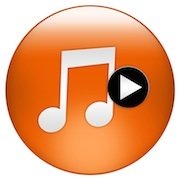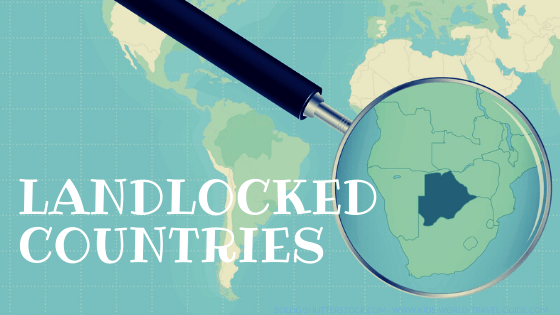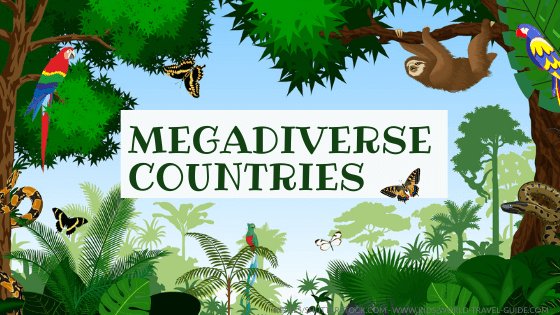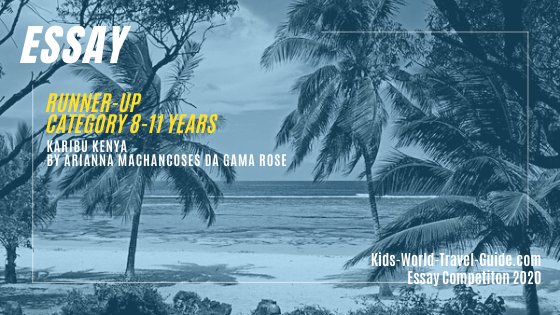- Homepage
- Venezuela
Venezuela For Kids
Interesting Venezuela Facts for Kids
Here are some interesting facts about Venezuela for Kids. These facts were chosen and researched by kids especially for kids.
Fun Facts about Venezuela for Kids

- Population: 30 million people live in Venezuela (2022)
- Capital: Caracas with 3 million inhabitants
- Name: Bolivarian Republic of Venezuela
- Government: federal presidential republic
- Official Language: Spanish
- Religion: more than 95% are Christians
- Literacy: 97% of the population over 15 years of age can read and write
- Currency: Bolivar Soberano
- National Symbols: the national colours: yellow, blue and red, and the troupial (national bird)
- National Day: 5 July (Independence Day)
- National Anthem: 'Gloria al Bravo Pueblo', means in English: Glory to the Brave People
- History: The first indigenous people inhabited the land already 15,000 years ago. The first settlement by Spanish explorers was established in 1520. The name "Venezuela" is said to originate either from the Italian word for "Little Venice" which is Veneziola in Italian that was given to the area by the Italian explorer America Vespucci due to the stilt houses at Lake Maracaibo or from the indigenous people that called themselves Veneciuela. The country was a colony of Spain from 1522 until 1811 when Venezuela declared independence. The country only became fully independent in 1829, when Venezuela separated from Gran Colombia.
Venezuela for Kids | Geography
Where is Venezuela? Venezuela is a country in northern South America. The country has the shape of a triangle and borders the Atlantic Ocean to the north. The Caribbean Sea is part of the Atlantic Ocean.
Land borders are shared with Brazil, Colombia and Guyana. The longest landborder is shared with Colombia.
The capital city of Venezuela is Caracas.
 Map of Venezuela
Map of VenezuelaAbout 300 islands belong to Venezuela, these are located in the Caribbean Sea. Most of these islands are small and inhabited.
The climate of Venezuela is tropical, hot and humid, as well as more moderate in the mountainous regions of the Andes highlands.
A flight to Caracas takes about 17 hours from London/UK, or 8.5 hours from New York/USA.
Venezuela is more than twice the size of California/ USA or a bit larger than Germany and Spain combined or a bit smaller than Nigeria.
Venezuela for Kids | Geo Superlatives
- Venezuela is one of the 17 megadiverse countries in the world.
- Venezuela’s highest peak is the Pico Bolívar with 4,979m/ 16,335 ft.
- Venezuela does not only have very high mountains but is known also for the tepuis which are very unique table-like flat mountain landforms.
 Kukenan Tepui in Canaima Nationalpark
Kukenan Tepui in Canaima Nationalpark- The most important and largest river system in Venezuela is the Orinoco River.
- The Angel Falls, also called Salto Angel, are the world’s tallest waterfalls with 979 m/ 3,211 ft and are located eastern Venezuela.
 Angel Falls
Angel Falls- Lake Maracaibo is often named the largest lake of Venezuela, however, it is more exactly an inland sea or bay of the Caribbean Sea.
 Lake Maracaibo
Lake MaracaiboLake Maracaibo is world's most active area for lightnings! Powerful storms at Catatumbo can reach up to 28 strikes per minute and often happen in the evening or at night. Some of these lightnings can last throughout the night.
Venezuela for Kids | Attractions and Landmarks
Besides the fascinating waterfalls, rainforest and 43 national parks, there are our some other awesome landmarks and attractions in Venezuela for families to explore:
- Los Roques is a chain of islands in the Caribbean Sea with about 250 coral reefs. There is a turtle sanctuary and lots of picturesque spots for swimming, snorkelling and diving in turquoise coloured clear waters.
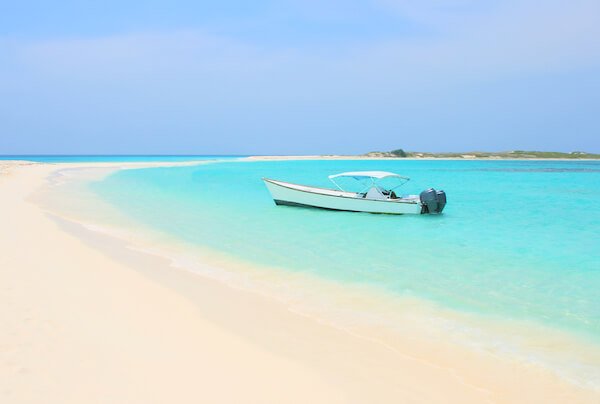 Los Roques beach
Los Roques beach- The mountain town of Merida is known its beautiful colonial buildings as well as for the "Mountain Dreams" (Montana de los Suenos) fun park which is an attraction enjoyed by many families. The peaceful landscape in northwestern Andes region is a wonderful escape for many city dwellers.
 Merida mountainscape
Merida mountainscape- Esfera Caracas 360, in English called "Caracas Sphere", is a famous sculpture by artist Jesús Soto. The sculpture offers optical illusions when walking around it. The 'Soto Sphere' is seen as a symbol of the capital city.
 Caracas Sphere
Caracas Sphere- The town of Coro is the oldest colonial town in Venezuela. The Cathedral was built already in 1525 and the town was the first capital of the country and still houses many colourful colonial buildings.
 Coro Cathedral
Coro Cathedral- The Medanos de Coro National Park near the city of Coro is famous for its huge sand dunes. The sanddunes can reach over 40 m/ 130 ft in height.
 Medanos de Coro National Park
Medanos de Coro National Park- The statue of the Virgin Mary of Trujillo is the highest statue in the Americas. It is taller than the Statue of Liberty in New York!
 Statue of Peace Virgin Mary in Trujillo in Venezuela
Statue of Peace Virgin Mary in Trujillo in VenezuelaVenezuela for Kids | Venezuelan People
The region of today’s Venezuela was settled already about 15,000 years ago. Among the indigenous population of the area are the Timoto-Cuicas, the Kalina and the Mariche people.
 Caracas - Venezuela's capital city
Caracas - Venezuela's capital cityCaracas is the largest urban area in Venezuela and houses about three million people. Most of the Venezuelans live in the northern and western highlands.
Maracaibo and Valencia, which was the capital city for a short time in the 1830s, are other large cities with more than two million inhabitants.
Venezuelans enjoy being out and about such as in Caracas East Park, where there is also the Humboldt Planetarium, a zoo and a children's museum with a replica of the caravel of explorer Christopher Columbus.
 Parque del Este (East Park) in Caracas
Parque del Este (East Park) in CaracasEducation in Venezuela is free for children up to 15 years, however, in rural areas many schools do not have toilets, windows, proper classrooms. In remote areas access to a library or computers, are something most children only can dream of.
In Venezuela it is prohibited to manufacture, possess or sell violent video games and toys, still Venezuela is one of the most dangerous countries to live in.
The country is going through a bad crisis and many people are fleeing the country as poverty and crime is very high in many places.
The country has the highest murder rate of the world. The death penalty was competely abolished in Venezuela in 1893 and the maximum jail sentence is 30 years.
Venezuela for Kids | Venezuela Economy
The country has large resources of petroleum, natural gas and minerals such as iron ore or gold. Still the population in the country is very poor, almost nine in ten people suffer from poverty and hunger.
 Puntofijo's oil industry
Puntofijo's oil industry- Venezuela has the largest oil reserves in the world, about 18% of all oil reserves are held by Venezuela. The first oil field was drilled in Venezuela in 1914, however, due to the falling oil price, the economy suffers tremendously as almost all of Venezuela's exports are crude oil and refined petroleum products.
- The petrol price in Venezuela is the lowest in the world due to having high petroleum reserves.
- Venezuela also had the highest inflation rate in the world for several years. Prices in Venezuela doubled every 18 days! Now, with the Russian war in Ukraine, and thus having limited oil supply by Russia on the world market, inflation in Venezuela has decreased as Venezuela is able to export oil for higher prices.
- To counteract the hyperinflation, the Venezuelan government has introduced digital tokens in 2018. These tokens are called Petro, a cryptocurrency similar to Bitcoin. The name Petro refers to the backing of the currency by the national petroleum reserves.
- The main agricultural crops in Venezuela are sugar cane, corn, rice, potatoes or fruits such as bananas and pineapples
- The main trading partners of Venezuela are India, China and the USA.
Venezuela for Kids | Animals
The national bird of Venezuela is the troupial with its orange feathers.
 Troupial - Venezuela's national bird
Troupial - Venezuela's national birdVenezuela has a rich wildlife. About 8,000 species of animals are endemic in the country. Endemic means that the animals originated and always lived in this country or region. Venezuela is one of the richest countries in regards to biodiversity (which refers to plants and animals).
Most of the mammals and bird species can be found in the tropical rainforests south of the Orinoco river.
Among the fascinating endemic mammals are jaguars, giant ant eaters, sloths, lizards, howler monkeys and capybaras.
 Capybaras
CapybarasCapybaras are the world's largest rodents and grow up to 1.3 m/ 4.3 ft. Capybara's also live in Argentina.
Manatees can be found as well as Amazon river dolphins.
The crocodiles in the Orinoco river are among the largest crocodiles and smaller than the Nile and saltwater crocodiles. Orinoco crocodiles have a long and narrow snout compared to other crocodile species.
 Orinoco crocodile
Orinoco crocodileThe critically endangered Orinoco crocodiles grow up to 6.6 m/ 22 ft.
Venezuela for Kids | Geo for Kids
Useful Resources
- Agnieszka Gautier. "The Maracaibo beacon." NASA Earthdata. Last updated 19 April 2021. Last accessed 8 June 2022
- Arnaldo Espinoza. "The Untold Story of the Jesús Soto’s Iconic Caracas Sphere." Caracascronicles. 14 January 2019. Last accessed 8 June 2022
- Central Intelligence Agency. "Venezuela." World Fact Book. Update 19 May 2022. Last accessed 8 June 2022
Venezuela for Kids | Related Pages
We hope you enjoyed reading our Venezuela Facts for Kids. Make sure to bookmark this page, as we plan to add on more information to make this page even more interesting, not only for children:-)
Picture credits on this page: Images by SXC.hu and Shutterstock.com, Images: Statue of Peace Virgin Mary in Trujillo in Venezuela by Paolo Costa/shutterstock.com; Parque de Este by Giongi63/shutterstock.com
Return from Venezuela Facts to Kids World Travel Guide Homepage
Competition 2024 is open!

More about Countries in
South America
Join us on Facebook
Competition 2024

